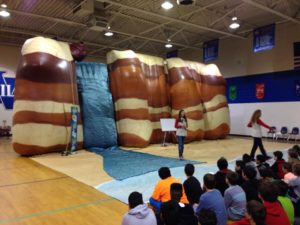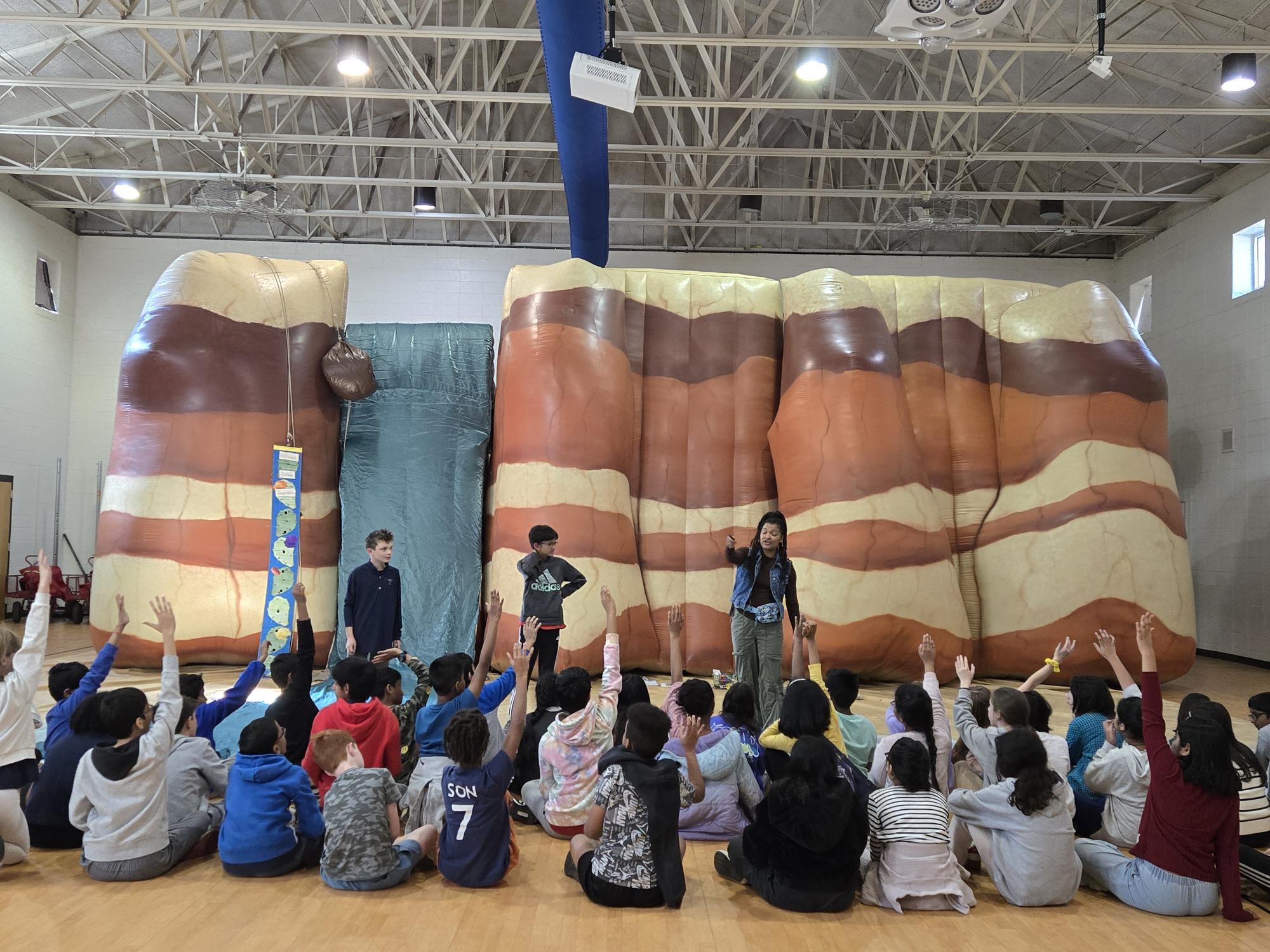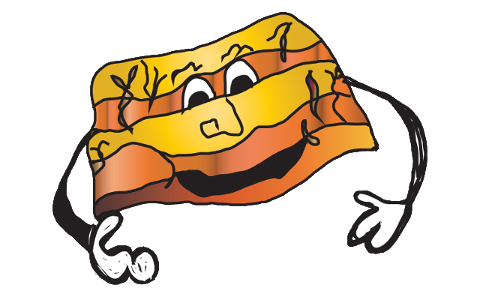Big Canyon Balloon
 During the Big Canyon Balloon program, students “fast forward” into the future to see how natures’ forces change our huge, patented cold air canyon model. Students debate fast versus slow changes to the earth while they experience weathering, erosion and deposition. They participate to create landforms including a barrier island, a sand dune, and a delta. Forces causing erosion are explored as we pause to compare rocks and minerals – what is the difference? What are types of rocks we know and how are those formed? Inside the canyon, students will discover a fossil record and an oil deposit. What are the fossils telling the explorers about the relative age of these layers? How did the oil form? Is it a renewable or non-renewable natural resource? The answers to these questions and much more will be discovered during out unforgettable, interactive earth science programs for each grade level.
During the Big Canyon Balloon program, students “fast forward” into the future to see how natures’ forces change our huge, patented cold air canyon model. Students debate fast versus slow changes to the earth while they experience weathering, erosion and deposition. They participate to create landforms including a barrier island, a sand dune, and a delta. Forces causing erosion are explored as we pause to compare rocks and minerals – what is the difference? What are types of rocks we know and how are those formed? Inside the canyon, students will discover a fossil record and an oil deposit. What are the fossils telling the explorers about the relative age of these layers? How did the oil form? Is it a renewable or non-renewable natural resource? The answers to these questions and much more will be discovered during out unforgettable, interactive earth science programs for each grade level.
Big Canyon Balloon Concepts covered:
- Slow vs fast changes over time
- Making and labeling a diagram
- Names of landforms
- Erosion
- Weathering
- Deposition
- Creation of landforms – canyon, delta, sand dune, barrier island, plateau, canyon walls, sea arch, sea cave
- Sediment
- Rock types
- Rocks vs minerals, Mohs hardness scale
- Eroding forces in nature
- Glaciers
- Constructive and destructive forces
- Potential and kinetic energy
- Types of weathering
- Scavengers, predators, prey, food chain
- Renewable vs nonrenewable resources/recycling/conservation
- Habitats, adaptations
- How an earthquake happens/fault lines
- Comparison of atmosphere on earth and moon
- Estimation and measurement tools – reasonable metrics
- Tectonic plate boundaries







